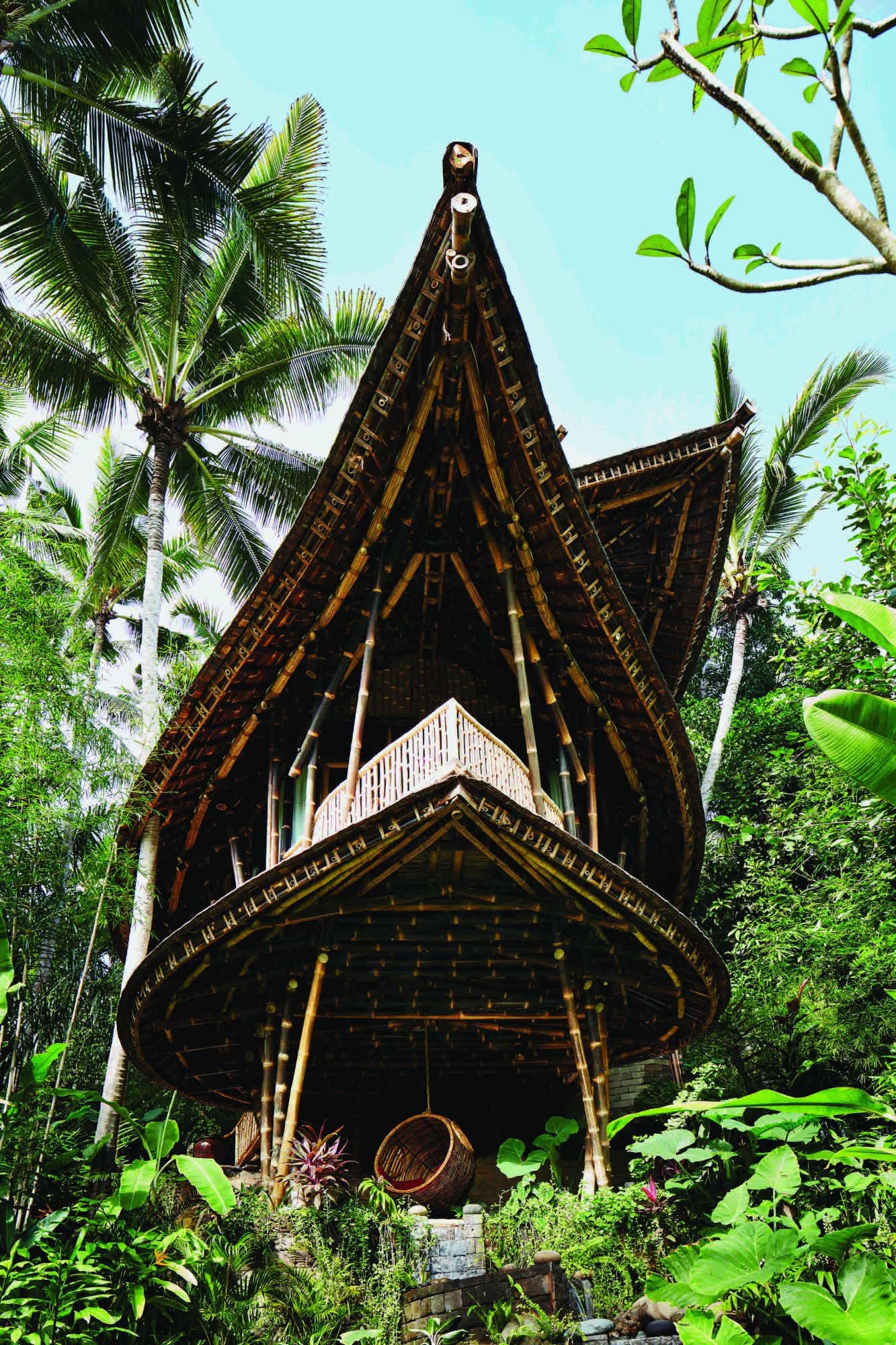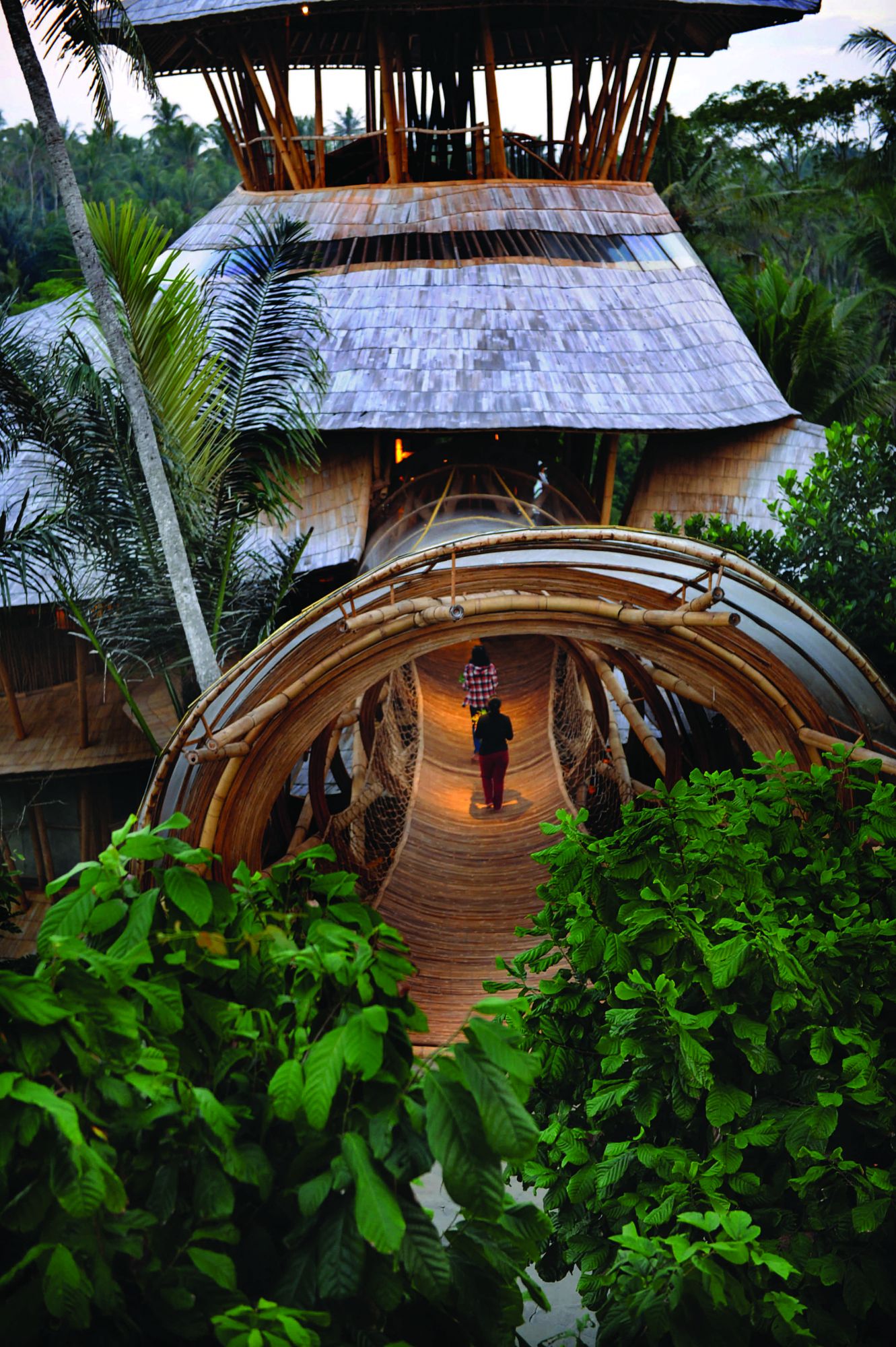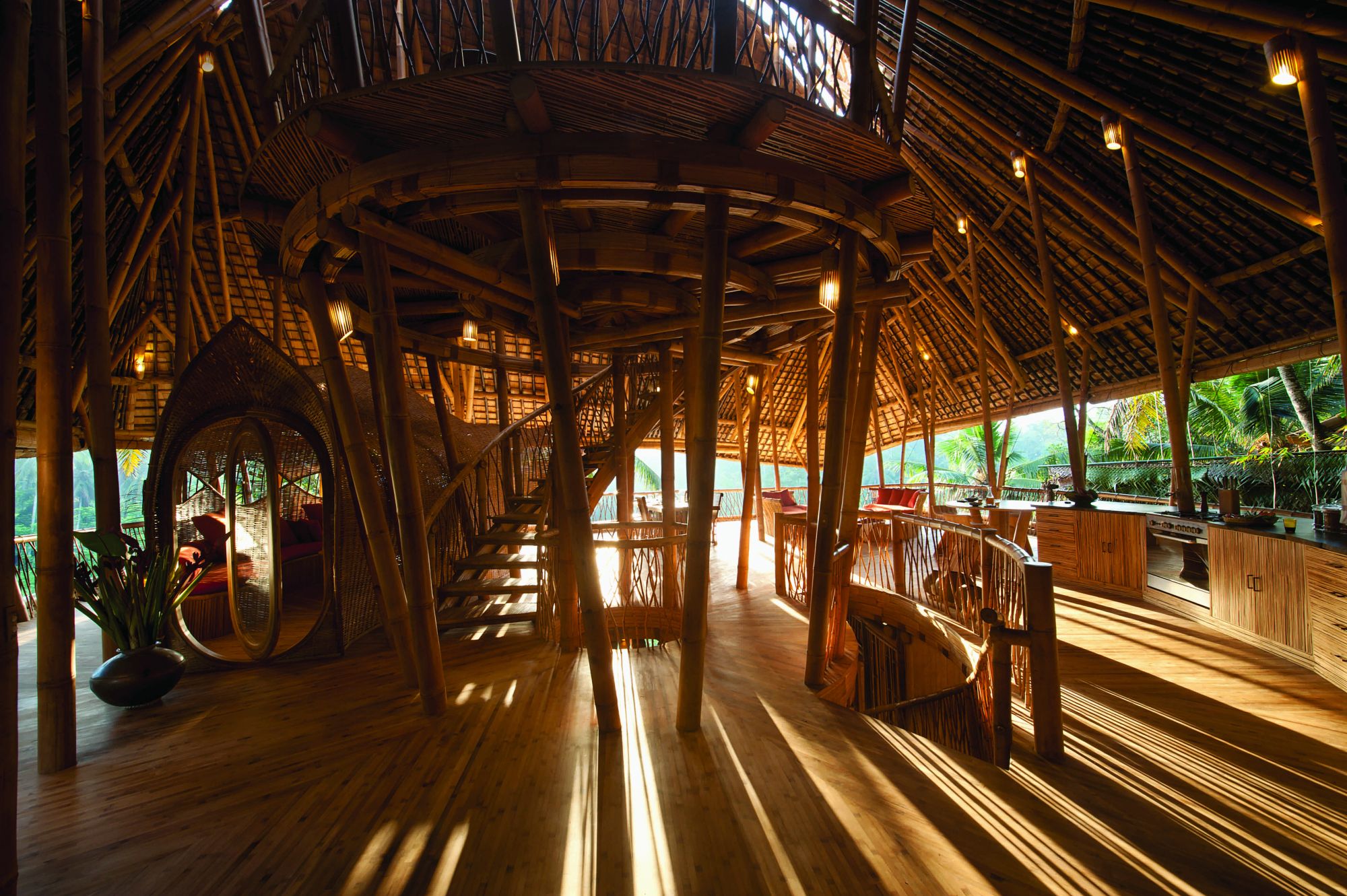Hardy’s innovative use of bamboo is drawing global attention, with her futuristic, eco-friendly structures changing the way architects think about building materials
The heavens open as I meet Elora Hardy inside an elegant bamboo building in the centre of the idyllic Indonesian island of Bali, one of many she has designed. Rain hammers on the thatched roof and the grass outside. There are no walls, so the cooling breeze blows across us, carrying the scents of the surrounding jungle. We’re technically inside, but it doesn’t really feel like it. “Isn’t it nice to be sheltered but not separated,” Hardy comments, gazing out into the forest.
Hardy has made a career out of blurring the lines between indoors and outdoors. As creative director of Ibuku, a Bali-based design studio, she has spent years exploring ways to build homes, schools, restaurants and more out of bamboo, one of the most sustainable building materials on the planet. But these aren’t the traditional, single-storey bamboo structures you see dotted around Southeast Asia; these are futuristic, curvaceous buildings that appear totally open to the elements. “Some of our buildings look like they’ve been built by aliens,” Hardy says with a laugh.





